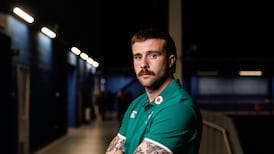Back in 1958, Ernie Vossler was just another face on the American Tour, a struggling journeyman who shot rounds of 76 and 80 to miss the cut in the US Open at Southern Hills. A year later in the same event, he shared fifth place with no less a figure than Arnold Palmer behind the winner, Billy Casper, at Winged Foot. The difference? Ernie had got himself a pair of glasses.
Apart from improving his ability to judge distance, he claimed that the new glasses made him feel more confident and more relaxed on the course. "They gave me a new outlook," he told a reporter, on becoming the tour's most improved player of 1959.
Tom Kite knows that feeling. Almost 40 years after a US Open aspirant had his golfing fortunes transformed by a visit to an eye specialist, the champion of 1992 has had a similarly dramatic experience. For Kite, however, it involved a surgical process which, as it happens, is available in this country.
After competing in last January's Bob Hope Classic, a player so long associated with thick glasses was able to discard them altogether. The transformation came courtesy of LASIK (Laser in Situ Kerato mileusis) surgery to correct nearsightedness. Within a few days, his vision improved from 20/480 without glasses to better than 20/15.
Though the heavy glasses had given last year's US Ryder Cup captain 20/20 vision on the golf course, his eyesight was deteriorating each year. And a month after his 48th birthday, he felt it was time to do something about it. Apart from the prospect of better vision, the thought of no longer having to endure the irritation of glasses sliding down his nose, or clouding-up when it rained, was most appealing.
"It was the best $4,600 I've ever spent," said Kite who would not be overly concerned about the cost, given tournament earnings in excess of $10 million in the US alone. Leading surgeons in this country will perform the operation for about £1,000 per eye.
The technique, which was pioneered in Colombia, has been around for more than a decade but, surprisingly, became available in the US only a few years ago. It allows surgery to take place while the patient is awake, though the eyes are numbed by special anaesthetic drops. Once the eye is numb, the opthalmic surgeon inserts an instrument that holds it open.
Then, with a £30,000 device called a microkeratome, he cuts a microscopic flap from the cornea, or window of the eye. The flap is turned aside and the surgeon, with the aid of a microscope, aims a laser at the exposed cornea for a minute or less, burning away the tissue that causes poor vision.
When the procedure is complete, the flap is repositioned on the cornea and within three minutes, it reattaches itself to the eye.
Kite was persuaded to have the surgery by Denver-based optometrist, Craig Farnsworth, who happens to be chairman of an organisation called Sports Eye Enhancements, in Colorado. This is a training system designed to help golfers improve their performance, especially putting, by fine-tuning hand-eye co-ordination and visual perception.
In fact, Farnsworth has written an instructional manual, called See it and Sink it, based on his work with Nick Faldo and other professional golfers.
For his part, Kite had a fascinating experience when he returned to the golf course having undergone the surgery at Denver's Spivak Vision Clinic. Though his vision had improved dramatically, even better than it had ever been with glasses, his ball-striking was disastrous.
"The ball looked so big, so close to me that I buried the club in the ground every time I swung," he said. "Gradually, however, I began to adjust. It's been a wonderful experience insofar as I find that I see something new every day."
Specialists have described Kite's experience as "a nice result." But the results are not guaranteed. It seems that the procedure works only on near-sighted people who can see close up, not on far-sighted people whose distance vision is better. It is also reported that after surgery, some patients may not be able to wear contact lenses again, while most older patients will still require reading glasses.
Meanwhile, observers are still getting used to the dramatic change in Kite's appearance, just as they had to adjust to a new-look Hale Irwin, when he ditched his glasses in favour of contact lenses, 10 years ago. In fact, Irwin was bespectacled when gaining his first two US Open triumphs, in 1974 and 1979, but he had abandoned glasses by the time of his third triumph, at Medinah, in 1990.
It is interesting that both Kite and Irwin should have captured the US Open. For Ernie Vossler, however, fifth place was to remain the highlight.









